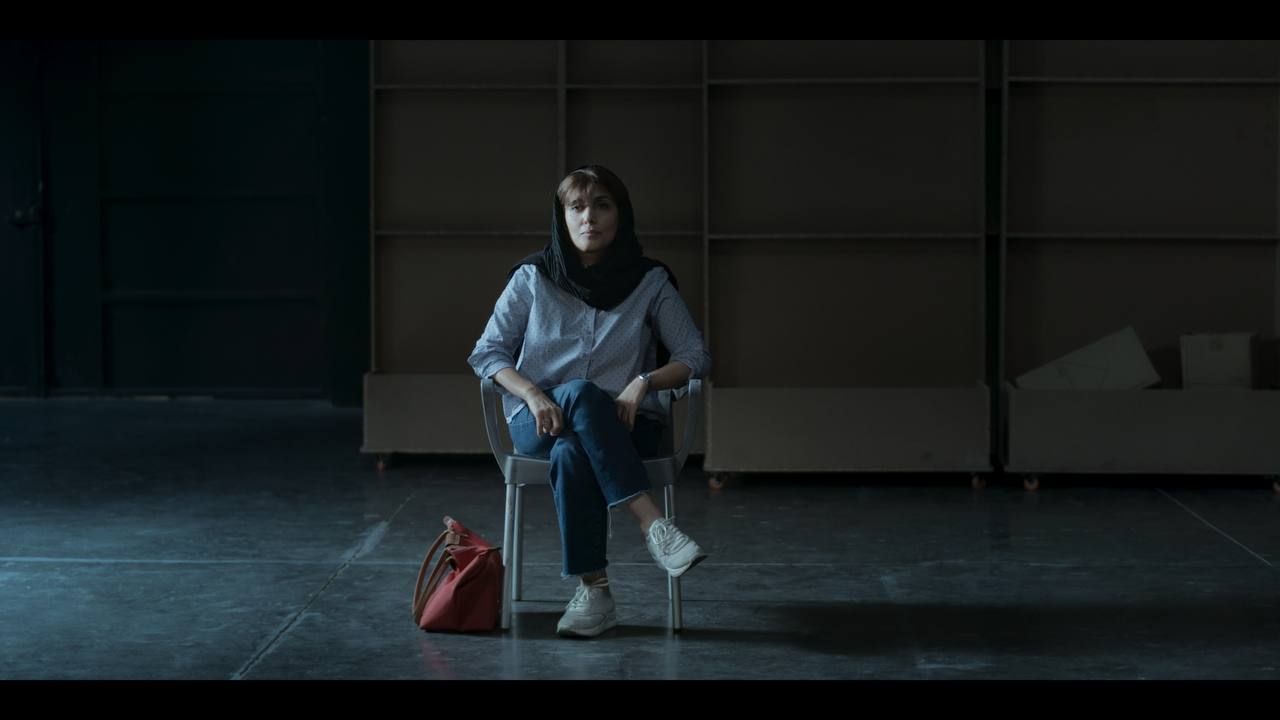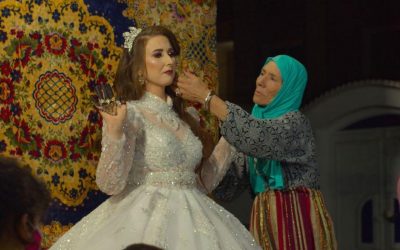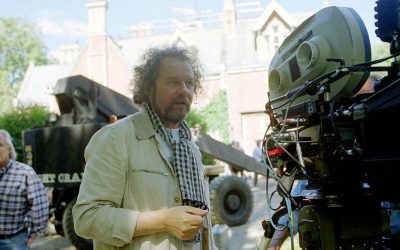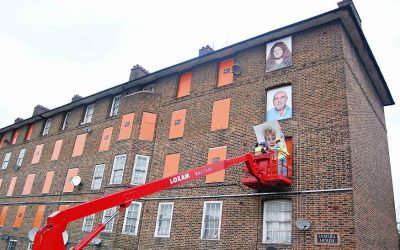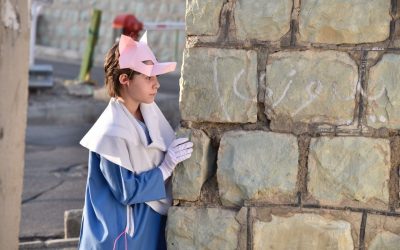
Mehrnoush Alia
Mehrnoush Alia is an Iranian filmmaker and playwright. She received her MFA from Columbia University Film Program and her BA in Film Studies and Comparative Literature from UC Berkeley. Her debut feature, 1001 Frames, premiered at Berlinale 2025 and is the official selection at Melbourne, AFI, Thessaloniki, Rio, and Taipei Golden Horse International Film Festival. She previously wrote/directed two award-winning short films Scheherazade and Faranak that screened at many international film festivals. Her web documentary SangSaboor (Scheherazade Now) about domestic violence in Iran that she wrote and co-produced was selected for IDFA Pitch Forum and received full funding from Stimulerings Funds.
Mehrnoush is the producer of an upcoming feature film Deep Dive and over a dozen short films and promotional videos. Her feature scripts have been selected to develop at programs such as Cine Qua Non Lab, Golden Apricot, and Cannes Cinephilia Productions Residency. Alia is the co-founder of Maaa Art, a film and theater production company that works between New York and Tehran. Mehrnoush is an alumna of Berlin Talent Campus 2020.
Redcut: The title of the film, “A Thousand and One Frames,” in itself carries a powerful narrative and visual weight; it’s as if we are facing an endless collection of images, each containing its own independent story. What led you to choose this title? For you, is this name merely a metaphor, or is it also connected to the way the film is narrated and its formal structure?
MA: Honestly, the title is very connected to the way the film is told and structured. When I started researching, what struck me the most was that these stories of abuse of power are not limited to one country or one community—they’re everywhere, and they just keep coming. Whoever I spoke with had a story. That endlessness, that accumulation, is really at the heart of 1001 Frames. In a way, the film is also in conversation with storytelling traditions. Ten years ago, I made a short called Scheherazade, which played with this idea of fragments of stories, and I always felt there was more room to expand it. Turning it into a feature gave me that space—to weave the stories together, let them echo each other, and build a kind of rhythm where one frame carries into the next. It was very important for me that this film exists in the post-#MeToo world, since people have been talking about these issues more openly. However, when you look closely, the structures themselves haven’t really shifted. That tension—between awareness and the lack of real change—is what I wanted the form of the film to reflect. So, the title isn’t just a metaphor; it’s a way of signaling that what you’re seeing is part of a larger, ongoing fabric of stories. At the end of the day, I wanted the film to feel like a chorus rather than a solo voice—stories completing and amplifying one another. From the start, the title was going to have 1001 in it. But it took me a while to arrive at this title, and I think in a way it was born through the process.
Redcut: In this project, you took on both directing and producing, which are usually considered two very different roles. How did managing both simultaneously affect the course of the work? Did it allow you greater creative freedom, or did the financial and managerial pressures sometimes create a gap between your artistic vision and the realities of production?
MA:I’ve actually spent more years producing than directing, which I think is true for a lot of independent filmmakers—you end up wearing many hats just to get your projects off the ground. From the very beginning I knew that with my first feature, especially with such a difficult subject, it would be unrealistic to expect investors to just jump in. So, I approached 1001 Frames as a very low-budget project, and that gave me a lot of creative freedom.
I was also lucky to have two wonderful producers on board. They really carried the weight during the actual shoot, which allowed me to focus more on the film itself. But everything before and after, that was mostly me. I was applying for funding, keeping the project alive, and later on navigating post-production. The most stressful part came when we got the incredible news that the film had been selected for Berlinale. We had only a month to finish the film, find a sales company, and make a million decisions all at once—while my producers were tied up with other projects. That period definitely tested me, and I don’t think every choice I made under that pressure was perfect.
And of course, I was also editing the film myself, which added another layer of emotional intensity—especially when I had to cut out one of the actresses. So yes, sometimes the producing side weighed heavily on the artistic side. But at the same time, I think that’s part of being an independent filmmaker. You fight through the chaos, and somehow that struggle also becomes part of the film’s DNA.
Redcut: In the film, layers of lived experience, personal memory, and even a contemplative perspective on the surroundings seem to have a strong presence. What was your process in transforming a completely individual and private experience into the language of cinema—a language through which not only you but also the audience can empathize?
MA: One of the first choices I made was that I wanted the whole film to be seen through the perspective of the audition camera. In a way, the audience is seeing the world through the point of view of the director, watching everything unfold from his gaze. Of course, that’s not a comfortable place to be, especially given the subject matter, but I felt it was important to create that intimacy. It forces us to confront the imbalance of power in a very direct way.
The film is born from a lot of research and talking to women who shared their stories with me. Because the actresses are re-enacting stories that are reflective of very familiar experiences, as well as those of countless other women, there’s this layering of memory, performance, and lived experience. That was very moving for me. What could have remained just my own private meditation suddenly became something larger—something that connects to many people. I think that’s where cinema is so powerful: it can transform an individual perspective into a shared emotional space. My hope was that by leaning into that intimacy and discomfort, the audience would actually end up feeling closer to the women’s experiences, rather than distanced by them.
Redcut: In many parts of the film, the camera remains still, and this stillness directs the audience’s attention primarily to the details within the frame and the flow of time in the image. This choice seems deliberate and carefully considered. Could you explain why you decided to work mostly with a stationary camera? How does this stillness relate to the themes and inner world of the film?
MA: The choice to keep the camera mostly static was very deliberate. For me, the stillness of the frame became a way to let the weight of the moment speak for itself. When the camera doesn’t move, you notice everything else more—the gestures, the silences, even the tension in the air. It creates a space where time itself feels heavier, almost oppressive, and I felt that mirrored the psychological experience of the characters.
It also had to do with the subject matter. The women in the film are recounting or re-enacting painful moments. A moving or overly expressive camera could have distracted from that honesty. The fixed frame forces the audience to really sit with them—to experience the discomfort without escape. In a way, the stillness is both formal and ethical: it respects the vulnerability of what is being shared, while also aligning with the themes of power, control, and entrapment that the film is exploring.
But we also explored some moving shots by establishing early on that the camera is on a tripod dolly. That way, the cameraman had the flexibility of moving the camera when it asked for it, to get closer to the actors, to increase the discomfort that the proximity offered. Also using the zoom lens offered us the chance to get closer to the actresses when we needed to without moving the camera, and also to have a bit of a variation in framing. But we tried to use it sporadically to have it suggest that the man behind the camera is not a professional cameraman, but the director who is filming these scenes on his own.
Redcut: Beyond its narrative, the film has a distinctive approach to depicting the world of women, especially those living under the oppression and limitations of patriarchal structures. How is this aspect reflected in the film’s form and content? During production and editing, was the concern of representing these experiences and reflecting on male power and oppression one of the factors shaping your visual and narrative choices?
MA: Exploring the dynamics of power relations especially as it is experienced by women who are stuck in a patriarchal society was one of the starting points of this project for me. The auditions offer a unique moment where one can quickly get a glimpse into someone’s life, and because of the inherent power dynamic, I found it to be a perfect setting to explore moments when women find themselves stuck in an oppressive world. The direct reference to One Thousand and One Nights and especially its opening, where virgins are murdered by a king, was crucial to me. The director in the film claims to be casting for Scheherazade, and that “permission” to ask for women’s stories becomes both a narrative device and a mirror of power dynamics. It’s telling, because in that ancient story the king becomes a parallel for the director’s role here: an authority figure who controls the frame.
The moments the women tell their own stories, we get to know these women a little bit, something that would be difficult to achieve in this short time with them in an audition setting. This is something that does not happen in the original tale which is what always struck me about Scheherazade. As a heroine who breaks the cycle of violence through storytelling, she is still performing for the king’s expectations. We never really learn who she is—her desires, her fears, her contradictions. She exists more as a symbol than a full human being. For me, that gap was important. I wanted this film to dig into the women’s own voices, to give them depth and individuality, not just symbolic weight.
That’s why the audition setting is so deliberate. It’s a space where performance, power, and control collide—and one that reflects the way women’s bodies and voices have historically been framed in cinema. But what excites me is how the women in the film push back, each in their own way. Their voices, and their presence, reshape the dynamic, something that I often thought about during the making of the film and its edit.
I should also add that this really was a collective effort. So many women shared their personal stories with me during the research, and I was determined that every character and moment be rooted in truth. Filming was hard—it asked people to live through painful experiences—but everyone, including the men, stood in solidarity with the project. That emotional investment, from both women and men, shaped the film as much as I did.
Redcut: One of the major challenges in contemporary cinema is the relationship between form and audience—how to remain faithful to creative structures while still building a bridge to the viewer. How do you define this relationship in “A Thousand and One Frames”? Did you make the film primarily as a means of expressing your inner vision, or did you also keep the audience’s experience in mind throughout?
MA: I think more than anything, I had the viewer’s experience in mind. For me, the film was never just about expressing my inner world—it was about creating a space where the audience could really feel the tension, discomfort, and vulnerability of those moments. From the very beginning, I wanted viewers to be placed in the director’s chair, so to speak, and to confront the unease of watching these auditions unfold. It’s not a comfortable position, and that’s intentional.
The challenge was to design the form so that it doesn’t alienate, but instead pulls the viewer deeper into the dynamics at play. I wanted the fixed camera, the silences, and the fragmented storytelling to slow down the viewing experience, so that every pause, every hesitation, and every shift in body language could be felt. That kind of stillness gives the audience time to really sit with the discomfort—and hopefully recognize parallels with power structures outside the frame, in the real world.
In a way, the structure of the film mirrors the stories themselves: fragmented, layered, and unresolved. But it was important to me that it also left space for the audience to bring in their own experiences and interpretations. I think that’s the bridge between form and audience—not simplifying or diluting the vision, but creating enough openness for viewers to see themselves reflected in it.
Redcut: As a filmmaker who has created your first feature, how has this experience influenced your perspective on the future? Are you currently developing other projects, and how do you think the achievements of “A Thousand and One Frames” will inform or inspire your next steps?
MA: It has been an incredible journey in many ways, and I think of it as a huge learning experience. The making of it, trusting the cast and crew, gaining their trust, allowing flexibility and building something that I think of as a truly collective experience has been a huge help in my learning curve as an artist. I feel more confident in my work and I like to continue on the path that I have started with this film. I had previously experimented with it on my short film Scheherazde, but it is only after this experience that I can say I am finding what works for me as a filmmaker. I have learned to let go of control and trust the process and not to micromanage everything and be a perfectionist which is something I used to do a lot.
I have also realized how challenging and important the life of a film is after its completion and how far in advance you have to think of that important next step. I had moved full force and at a fast speed with 1001 Frames, which might not have been the best choice. The entire process from the time we filed until when we premiered was a little over a year. I feel if I had thought through the life after its completion more carefully, the film could have benefited a lot more. So that is surely something I will change for the future, and get more collaborators and co-producers involved during the development.
I have a few other projects, some that I had started before 1001 Frames that I had put on hold because of this, but I want to go back to them and finish those first before embarking on new projects.

